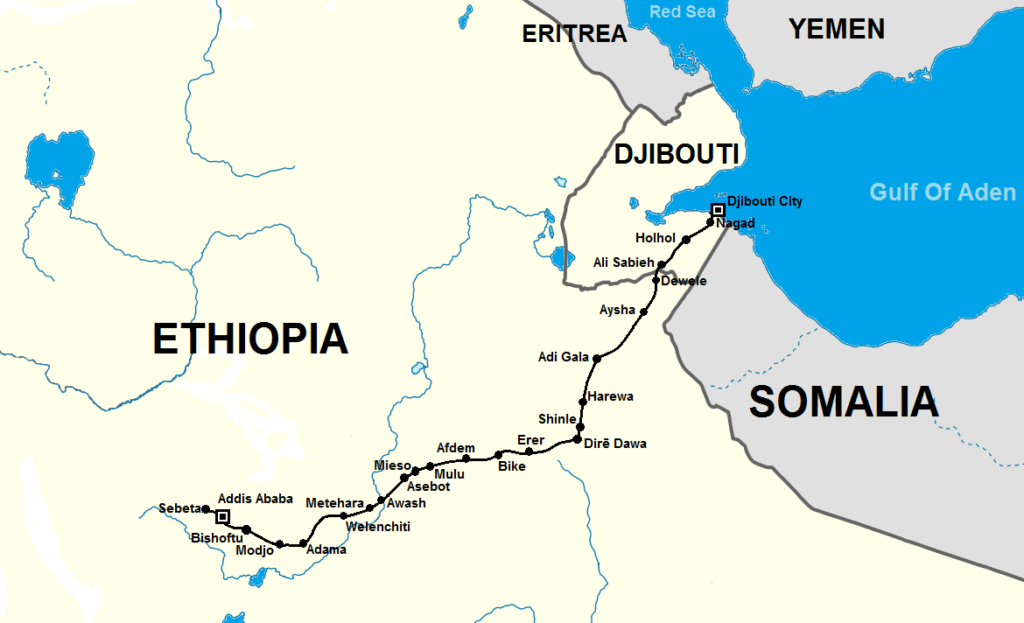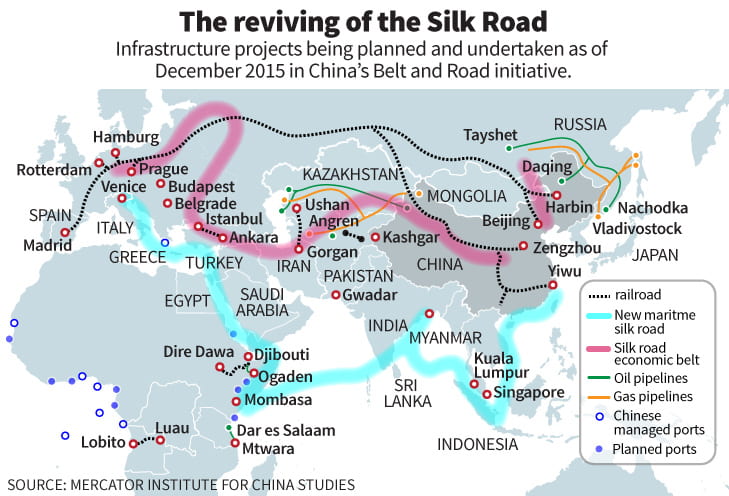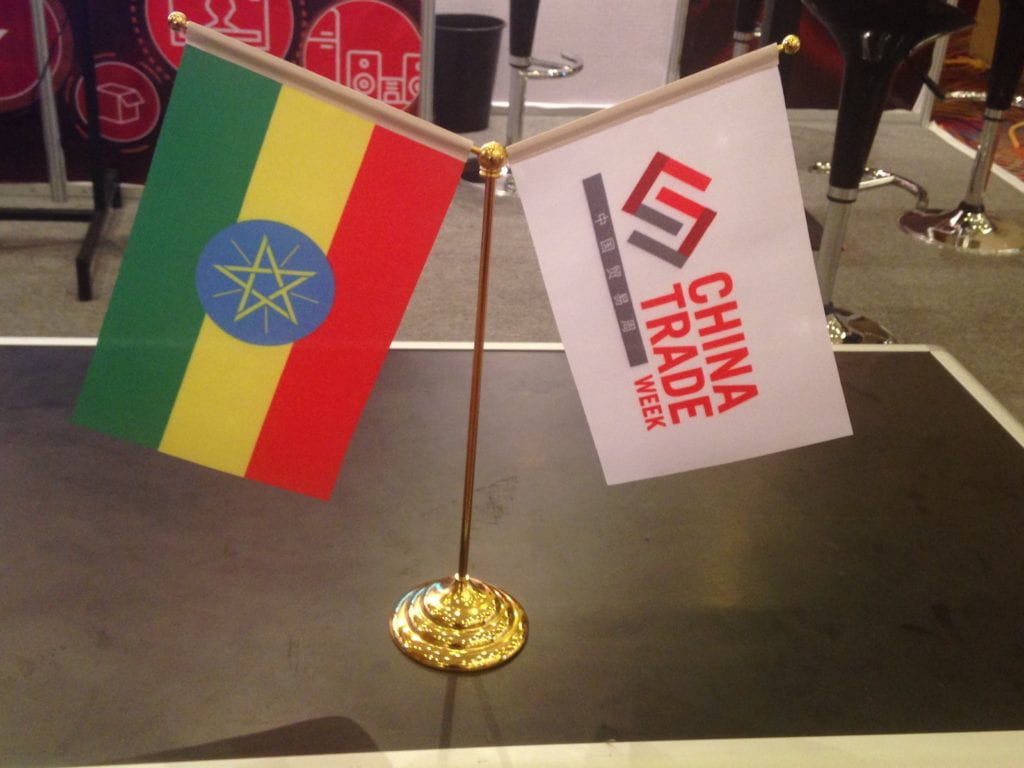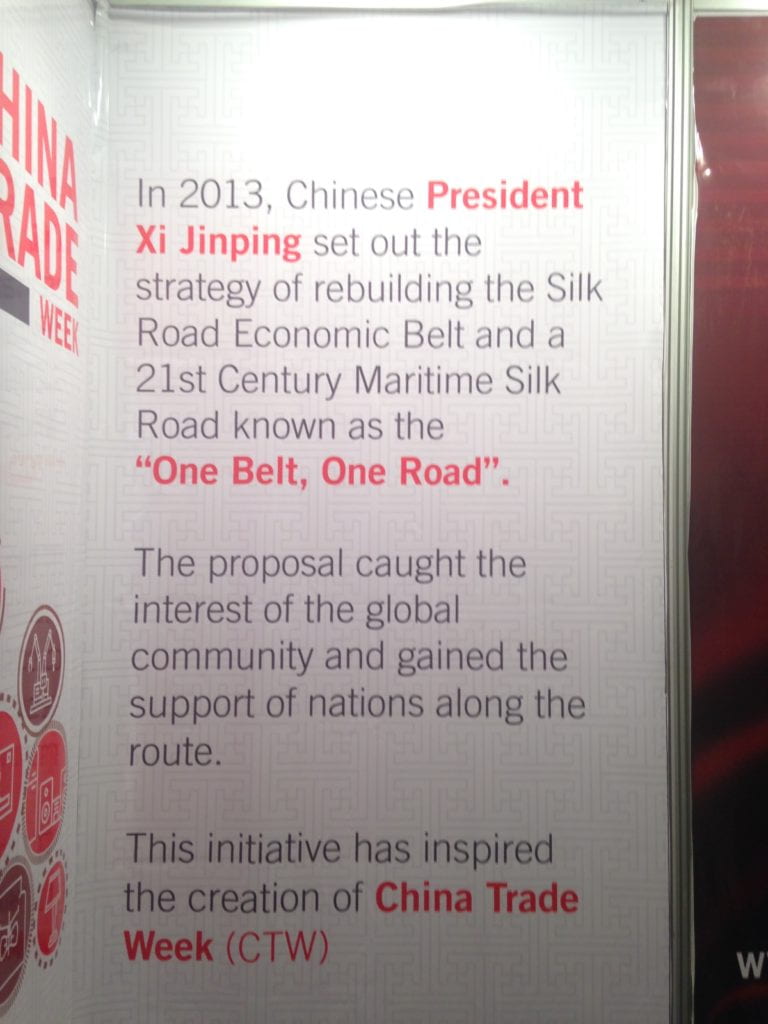When you look at a map of the newly inaugurated Addis Ababa-Djibouti railway, it looks relatively straightforward: from Point A to Point B. From Sebeta, a suburb on the outskirts of Ethiopia’s capital, to the Port of Doraleh, a newly built port in Djibouti along the Red Sea’s important maritime shipping route. But the relationships of connectivity that this railway has inspired and will inspire are far greater than just these two dots on the map. Instead, it’s becoming more and more clear that the building of this railway resulted in a complex network rather than a straight line, and is representative of political and economic relationships on the local, national, regional, and global scales.

My research project this summer is to examine two dimensions of this new railway, which was just finished in January of 2017 and is still in trial service. One side of my research addresses the question of what this railroad represents on the more political, economic, international relations level. The other side is what effect this project has on local, informal economies, asking how people living along the railway use and take ownership of this new infrastructure.
So far, as I’m still in Addis, I haven’t yet been able to begin the second half of my research in the towns along the railroad. But I’ve been catching glimpses of three different initiatives that this railroad might represent, through newspaper articles, the conference I’ve attended, and formal and informal interviews:
China’s “Belt and Road” Initiative… Sometimes called the modern-day Silk Road, the “Belt and Road Initiative” is China’s strategic and economic plan to integrate the world’s economy through infrastructural projects such as railways and ports, pipelines, and planned maritime routes. Built by two Chinese state-owned companies and funded by a loan from China’s Exim Bank, the Addis Ababa-Djibouti railway is a part of this initiative.

Conferences like the one I attended earlier this week, “China Trade Week,” represent China’s strong relationship with the Ethiopian government and investments in the economy.
Ethiopia’s Plans for Economic Growth… I’ve heard it often repeated in the past week that Ethiopia’s government stakes its legitimacy on economic development. Following a model of state-led development, the Ethiopian government has a deep involvement in the managing of the national economy. 5-year “Growth and Transformation” Plans (GTPs) are the mechanisms through which the government pushes through large economic development goals, including huge infrastructural projects. The railroad has been a featured project in a couple GTPs and in many ways represents what the government is capable of, serving as a source of pride and achievement.
A Transnational Africa Rail network… There’s been a long-held vision for a rail network that links together all of Africa in order to encourage intra-African trade. In many ways, this is a response to the type of economies that European colonialism created, markets that faced outward instead of inward. To this day, trading between African countries is relatively low. A rail network connecting multiple countries across the continent would help to encourage more intra-African trade. As a transnational rail line, linking Ethiopia and Djibouti, this railway is one step closer to making this pan-African dream a reality.



